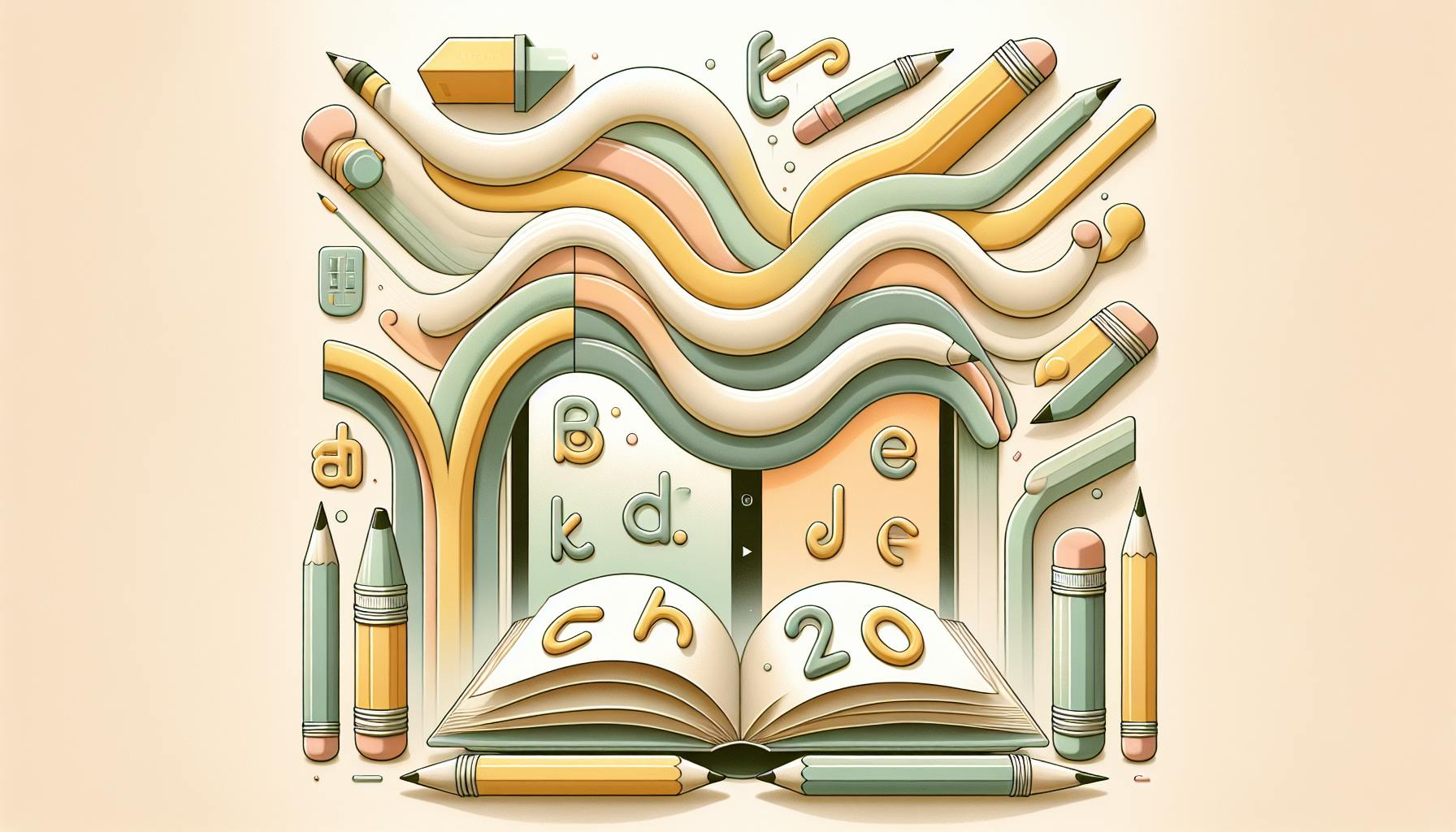Teachers, here are 7 essential digital tools to support your students' mental health:
- LessonBud: AI-powered mental health tracking
- Crisis Text Line: 24/7 text support for emergencies
- Anonymous reporting apps like Safe2Help Nebraska
- Mental health apps (e.g., MindShift CBT, Happify)
- Mental health screening tools like MHA Screening
- Private feedback platforms (e.g., TalkLife, 7 Cups)
- Daily mood tracking apps like Moodfit
Why this matters:
- 77% of students face psychological distress
- 69% deal with mental health issues
- Teen mental health ER visits up 31% since COVID-19
Quick comparison of key tools:
| Tool | Best For | Key Features | Cost |
|---|---|---|---|
| LessonBud | Tracking | AI monitoring, fits teaching workflow | Varies |
| Crisis Text Line | Emergencies | 24/7 support, text "HOME" to 741741 | Free |
| Safe2Help | Reporting | Anonymous, 24/7 crisis counselors | Free |
| MindShift CBT | Anxiety | Thought journal, quick relief tools | Free |
| MHA Screening | Early detection | Free, anonymous, science-backed | Free |
| TalkLife | Peer support | Anonymous community | Free (basic) |
| Moodfit | Daily tracking | Stress, anxiety, depression tracking | Free (basic) |
1. LessonBud: Student Mental Health Tracking

LessonBud isn't just an AI teaching assistant anymore. It's now a mental health tracking tool for teachers too. But don't worry - it still keeps education front and center.
Here's the deal: LessonBud's AI watches how students interact and work. It looks at things like:
- How much they participate
- When they turn in assignments
- How they talk to teachers
From this info, it can spot signs that a student might be struggling with stress, anxiety, or other mental health issues.
But here's the cool part: Teachers don't have to do extra work. LessonBud fits right into their normal teaching routine. It's like having an extra set of eyes that never gets tired.
Why does this matter? Because catching mental health problems early can make a huge difference for students.
LessonBud also helps teachers and parents team up. If there's a concern, everyone can work together to support the student.
Here's a quick look at what LessonBud does:
| What it does | Why it matters |
|---|---|
| Tracks student participation | Spots sudden changes |
| Watches assignment timing | Finds stress-related academic issues |
| Analyzes communication | Notices changes in how students interact |
| Fits into teaching workflow | Doesn't add extra work for busy teachers |
2. Text Support in Crisis Situations
Students today often prefer texting over calls. So, when mental health emergencies hit, crisis text lines can be a real lifesaver. Teachers, take note: these resources are must-haves.
The Crisis Text Line is available 24/7. Students just text "HOME" to 741741. Need school-specific help? Text "SCHOOL" to the same number. Trained counselors usually respond in minutes.
"We're here for schools during this pandemic. Bring Crisis Text Line to your school and help students get the mental health support they need." - Crisis Text Line Team
Another key player is the 988 Suicide and Crisis Lifeline. It's crucial, given that suicide is now the second biggest killer of Americans aged 10-24. They offer Spanish services and special help for LGBTQI+ students (text "PRIDE" to 988).
Here's a quick cheat sheet for crisis text services:
| Service | Text Code | What's Special |
|---|---|---|
| Crisis Text Line | HOME to 741741 | 24/7 help in English and Spanish |
| School Crisis Line | SCHOOL to 741741 | School-focused counseling |
| 988 Lifeline | 988 | LGBTQI+ support with "PRIDE" |
| Trevor Project | START to 678678 | LGBTQ+ youth specialists |
How can teachers help? Easy:
Put crisis text info in your email signature. Add it to online learning platforms. Stick it on classroom materials.
These text chats usually last 15-45 minutes. The goal? Help students calm down. And don't worry - it's all confidential. That makes students more likely to reach out when they're struggling.
"Too many people experience suicidal crisis or mental health-related distress without the support and care they need." - Federal Communications Commission
3. Private Student Reporting Tools
Students need safe ways to report mental health issues without stigma. Anonymous reporting tools are key for supportive school environments.
Take the Safe2Help Nebraska app. Since 2020, it's gotten 3,500 reports and covers 75% of Nebraska students. Here's how it works:
- Students report issues
- Crisis counselors at Boys Town in Omaha check each case 24/7
- Emergencies go to law enforcement
- Other concerns go to school threat assessment teams
"It creates that anonymous reporting where kids are able to report this stuff without basically having any recourse coming back on them." - Jay Martin, Nebraska Department of Education safety and security director
Top reporting platforms for schools:
| Platform | Features | Results |
|---|---|---|
| STOPit | App, website, hotline, photo/video support | 200,000+ interventions, 8,000+ schools |
| Anonymous Alerts | Real-time 2-way chat, mobile/web apps | 50% fewer suspensions reported |
| Say Something | 24/7 reporting (app/hotline/website) | Used in 120+ school districts |
These tools make a difference. Texas Leadership Public Schools saw quick wins after adding STOPit to six campuses. Students could now talk directly to administrators about hidden concerns.
Mental health reporting matters more than ever. Youth depression jumped 18% from 2021 to 2022. These tools help by connecting students with support early.
CrisisGo adds GPS panic alerts. Administrators can find and help students fast during emergencies.
"Sandy Hook Promise has made us more connected. It's made us more united. It's obviously made us safer and it's made us more informed of the things we need to do to continue to grow as a district for all of our students." - Kirk Carpenter, Superintendent of the Aztec Municipal School District
When picking a reporting tool, look for:
- 24/7 availability
- Anonymous options
- Fits with existing safety plans
The goal? A place where students feel safe sharing worries without fear.
4. Mental Health Support Apps
Mental health apps give students handy tools to manage their well-being without compromising privacy. The $6.2 billion mental health software market in 2023 shows these digital helpers are catching on in schools.
Some apps have solid research backing their effectiveness:
| App Name | What It Does | How It Helps |
|---|---|---|
| MindShift CBT | Thought Journal, Quick Relief tools, Goal setting | Tackles anxiety using science |
| Happify | Games, CBT exercises | Boosts well-being in 6 weeks |
| What's Up | Mood tracking, Grounding games, Coping strategies | Helps with depression and anxiety |
| Breathe, Think, Do | Problem-solving, Deep breathing | Builds emotional skills |
"Not enough services are available to meet the mental health needs of students on college campuses." - Dr. Denise E. Wilfley, Washington University Center for Healthy Weight and Wellness
Take the YOU at College portal, for example. It's a team effort by Grit Digital Health and Colorado State University. After using it, 81% of freshmen said they handled stress better. Now, 22 schools use it, including Coastal Carolina University. It's proof that tech can make a real difference in student mental health.
Thinking about costs? They're all over the map:
Headspace gives students a deal at $9.99 per year. Calm asks for $3.99 monthly. And some, like What's Up, offer free basic versions.
Purdue University showed how to blend these apps with existing support. They rolled out WellTrack, helping students track moods and learn coping tricks. It's made mental health help more accessible.
"You can't use only an app to solve mental health problems." - Tracie Zinman-Ibrahim, LMFT, CST
sbb-itb-bb2be89
5. Student Mental Health Check Tools
Mental health screening is crucial for catching issues early, especially in teens. New tools make this process easier and less scary for students.
MHA Screening offers free, anonymous, science-backed tools. They screen for various conditions like depression, anxiety, and eating disorders. Students get personalized resources based on their results.
Here's a quick look at some other tools:
| Tool Name | What It Does | How It Helps |
|---|---|---|
| Closegap | Daily check-ins, teacher dashboard | Stopped suicides, found self-harm cases |
| iyarn | Weekly anonymous check-ins | No login needed, builds emotional vocab |
| MoodCapture | Uses AI to analyze faces | Spots depression signs 75% of the time |
These tools are important. The CDC found that 44% of high schoolers felt constantly sad or hopeless, and 20% thought about suicide. Schools are using these numbers to start screening early.
"Having that data allows us to intentionally monitor the strengths and needs of students over time." - Dr. Lisa Micou, University of Richmond School of Professional and Continuing Studies
Roswell Independent School District shows how to do it right. They started small, testing the DESSA screener in one elementary school before using it in all K-8 schools. They did their homework first, making sure the program fit their needs.
Want to start screening quickly? Here's how:
- Put up MHA Screening posters
- Email screening links to students
- Leave resource cards in the nurse's office
- Add tools to the school website
Aiberry™ is taking things further. It uses AI to analyze text, speech, and video during automated interviews. 88% of users want monthly check-ins, showing that students are ready to use tech for mental health.
"Wellbeing is what underpins the success of the whole child." - Marc Pedersen, Assistant Principal, Blaxcell Street Public School
6. Private Student Feedback Tools
Private feedback tools open up new ways for students to share mental health concerns. These platforms make it easier for students to be honest about sensitive topics they might not want to discuss face-to-face.
Take TalkLife and 7 Cups, for example. They're both anonymous support channels where students can talk to trained listeners. TalkLife builds a supportive community for those feeling alone, while 7 Cups connects users with thousands of trained listeners and therapists, available any time.
But what about in the classroom? There are tools for that too:
GoSoapBox has a "Confusion Meter" and anonymous polls to spot struggling students early. Backchannel Chat offers private chat rooms for expressing concerns. AnswerGarden creates word clouds to show how the class is feeling. And Mote lets teachers give audio feedback, adding a personal touch.
"Anonymous and real-time feedback may help faculty to immediately resolve highlighted problems, ensure active participation and reduce the insecurities of medical students." - Abida Shaheen
The numbers back this up. In one study, students gave 89 detailed comments through anonymous channels, but only 25 through regular methods. That's a big jump, showing how privacy can get students talking about mental health.
For a more complete solution, there's SurveySparrow and Zonka Feedback. SurveySparrow feels like a chat, making it less scary to give feedback. Both keep data safe, which is crucial when dealing with mental health info.
Thinking about costs? 7 Cups is free to use, with a $12.99 monthly option for extra features. SurveySparrow has a free plan, while pro tools like Zonka Feedback start at $99.
The trick is picking tools that keep things private and get students involved. When students feel safe sharing, teachers can spot and address mental health issues before they get bigger.
7. Daily Mood Tracking Tools
Teachers can get a peek into their students' emotional world with daily mood tracking tools. These digital helpers spot patterns and potential mental health issues before they blow up.
Moodfit is a solid choice. It tracks stress, anxiety, and depression with an easy-to-use interface. You can grab it on iOS or Android. Teachers can use its detailed reports to spot worrying trends. The best part? The basic version is free for all students.
Some students need more specific help. That's where specialized tools come in:
- Worry Watch: Helps manage anxiety by pinpointing triggers and patterns
- MoodTools: Offers depression checks and a thought diary based on Behavioral Activation Therapy
- PTSD Coach: Free tool for trauma-related issues
Let's break down how these tools stack up:
| Tool | Best For | Key Features | Cost |
|---|---|---|---|
| Daylio | Daily Check-ins | Mood logs, activity tracking, stats | Free, Premium from $4.99 |
| YouHue | Classroom Use | Group insights, COPPA compliant, teacher alerts | Free version available |
| Rhithm | Quick Checks | Emoji-based, under 1-minute check-ins | Free for basic use |
"As the campus SEL Facilitator, it gives me a data based 'pulse' of the campus heartbeat." - Jennifer Ritter, Lewisville ISD
The numbers back up these tools. Studies show that social and emotional learning can:
- Cut behavioral problems by 9%
- Reduce emotional distress symptoms by 10%
- Boost social and emotional skills by 23%
The Mood Meter takes a different approach. It uses colors to help students plot their emotions and describe triggers in 150 characters. This visual method helps younger kids express tricky feelings. Teachers can use it as a quick activity at the start of class or during homeroom.
Want the best results? Get students to track moods regularly. Consistent check-ins give better insights than random use. Most apps offer free versions with key features, so you can start there before thinking about upgrades.
Tool Comparison Guide
Let's look at the key mental health tools teachers can use to help their students. Here's what you need to know about getting and using each resource:
| Tool Type | Top Options | Key Features | Implementation Needs |
|---|---|---|---|
| Crisis Support | BetterHelp, Talkspace | 24/7 therapist access, messaging/video | $60-90/week per student; school partnership needed |
| Daily Check-ins | Moodfit, Daylio | Mood tracking, analytics, activity logs | Free basic versions; premium from $39.99/year |
| Meditation & Mindfulness | Headspace, Calm | Guided sessions, sleep stories, kid content | $69.99/year; student discounts ($9.99/year) |
| Anxiety Management | MindShift, Worry Watch | CBT tools, trigger tracking, guided journals | Free to $11.99/year |
| Group Support | YouHue, Rhithm | Class insights, COPPA compliant, teacher alerts | Free versions for basic classroom use |
Headspace is a standout for schools. They offer student pricing at $9.99/year, way less than their regular $69.99 plan. They've got education-focused content, including short meditations perfect for class time.
"The student discount made Headspace accessible for our entire freshman class. We've seen a 23% improvement in reported stress levels since implementation." - Headspace Education Team
For big-time support, Talkspace has school-wide programs starting at $69 per week. They include:
- One-on-one therapy sessions
- Group support options
- Help during crises
- Teacher consultation services
When picking tools, think about these practical things:
Money Matters: Start with free stuff like MindShift or Breathe, Think, Do With Sesame. They give you the basics without breaking the bank.
Time to Set Up: Tools like Rhithm are great with quick 1-minute check-ins. That makes them easy to use in class every day.
Keeping Data Safe: Make sure the tools follow COPPA rules for student privacy. YouHue and other education-focused platforms put this first.
Getting Help: Look for platforms that offer special help for schools. Calm and Headspace have teams just for helping schools get started.
The best setups use more than one tool. For example, you could use Moodfit for daily tracking ($39.99/year) along with free crisis tools like MindShift. This gives you a lot of coverage without spending too much.
Key Points to Remember
Mental health support in schools is a big deal. The CDC says 1 in 5 kids have mental health issues. Anxiety and depression? They're the big ones.
To help students, we need to mix tech with human touch. The Well-Being Index is great for keeping tabs on how kids are doing - physically, socially, and emotionally. Teachers should use this info to tailor their support.
Money and privacy matter to students. A whopping 85.8% want free mental health help, and 79.4% care about keeping their info private. So, when you're picking digital tools, make sure they're affordable and follow COPPA rules.
"As teachers it's important that we are mindful that large numbers of our students are experiencing anxiety in a way they never have before." - Michelle Button, Educational and Developmental Psychologist
Want to make your classroom a safe space? Try these:
- Quiet corners with headphones
- Brain breaks
- Comfy seating options
- Daily mindfulness
Does this stuff work? You bet. A study of 2,000+ students found that using mental health apps regularly dropped depression scores by 2-3 points on the PHQ-9 scale in just six weeks.
Here's the kicker: teacher well-being matters too. A whopping 44% of teachers say they're burned out. So, set some boundaries. The Center for Whole-Child Education puts it this way: "When educators and students are dealing with high levels of stress, one of the most effective strategies is to lean into relationships."
In case of emergencies, have crisis resources ready. The Crisis Text Line is there 24/7. Put these numbers up in your classroom and online platforms. It could be a lifeline for a student in need.


